Preface
Acceptance said today Function Stack Frame Details (1) To talk specifically about things inside the MyAdd() function.
Sample Code
int MyAdd(int a, int b)
{
int c = 0
c = a + b;
return c;
}
int main()
{
int x = 0xA;
int y = 0xB;
int z = 0;
z = MyAdd(x, y);
printf("z = %d\n", z);
return 0;
}
Today's assembly language
int MyAdd(int a, int b)
{
001E2EC0 push ebp
001E2EC1 mov ebp,esp
001E2EC3 sub esp,0CCh
001E2EC9 push ebx
001E2ECA push esi
001E2ECB push edi
001E2ECC lea edi,[ebp-0Ch]
001E2ECF mov ecx,3
001E2ED4 mov eax,0CCCCCCCCh
001E2ED9 rep stos dword ptr es:[edi]
001E2EDB mov ecx,1EC003h
001E2EE0 call 001E130C
int c = 0;
001E2EE5 mov dword ptr [ebp-8],0
c =a + b;
001E2EEC mov eax,dword ptr [ebp+8]
001E2EEF add eax,dword ptr [ebp+0Ch]
001E2EF2 mov dword ptr [ebp-8],eax
return c;
001E2EF5 mov eax,dword ptr [ebp-8]
}
001E2EF8 pop edi
001E2EF9 pop esi
001E2EFA pop ebx
001E2EFB add esp,0CCh
001E2F01 cmp ebp,esp
001E2F03 call 001E1235
001E2F08 mov esp,ebp
001E2F0A pop ebp
001E2F0B ret
Our Stack Frame Graph
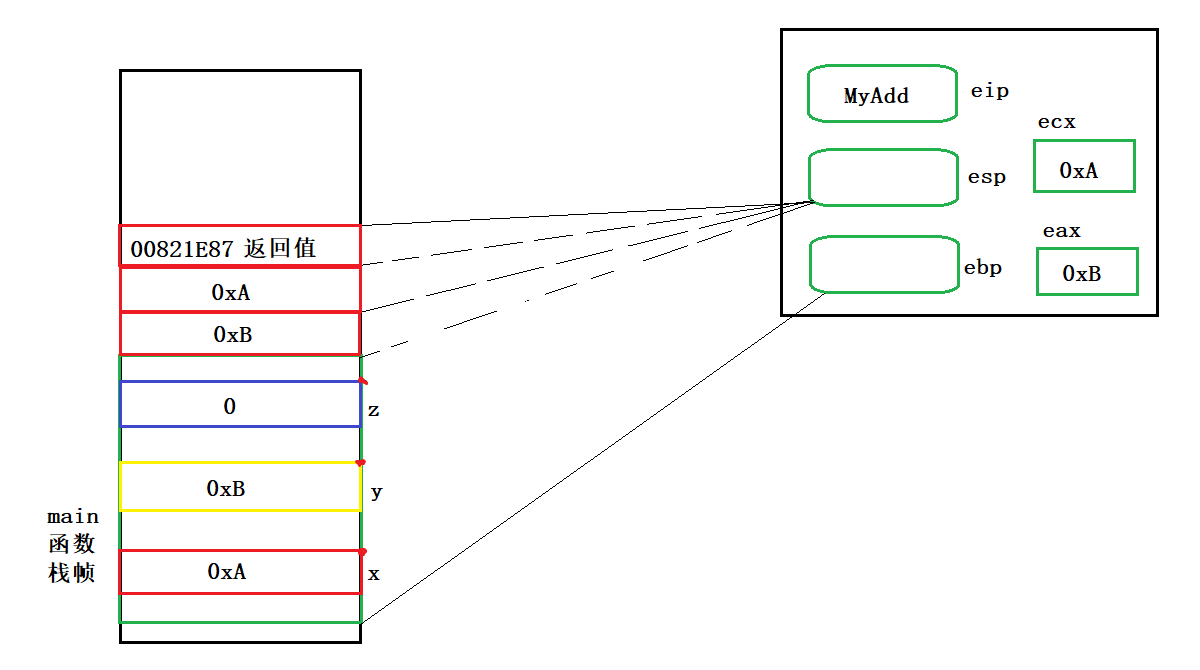
Formation of MyAdd Function Stack Frame
Step One
00821740 push ebp
This command pushes the contents of the ebp (that is, the bottom of the stack) into the stack, and the top of the stack changes as well.
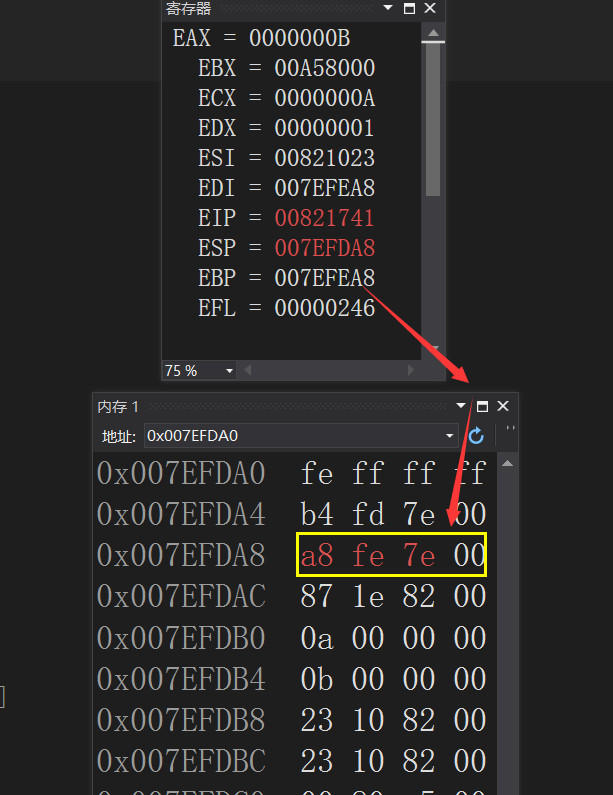
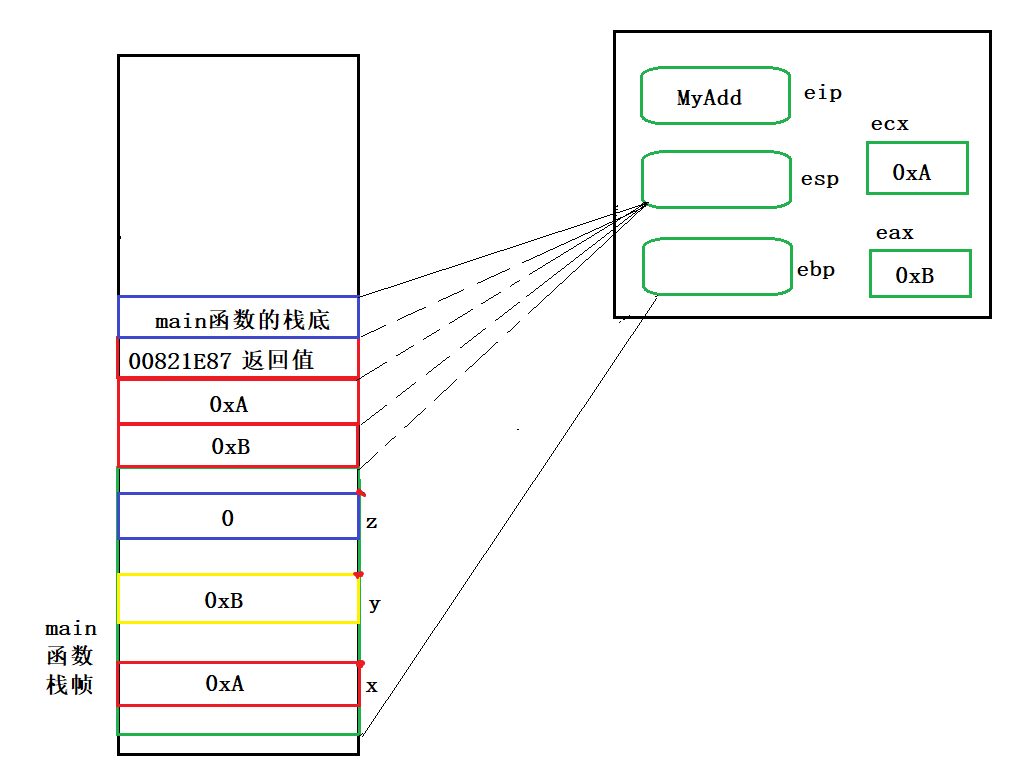
Step 2
mov: Data transfer instructions
00821741 mov ebp,esp
This command means to overwrite the contents of esp to ebp
- The content of the esp directly overwrites the content of the ebp
- The process passes directly through the CPU without passing through memory
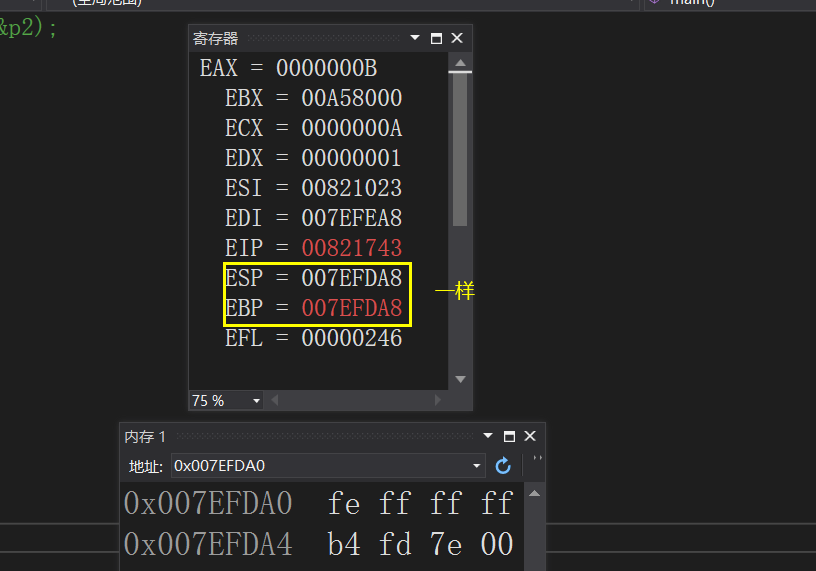
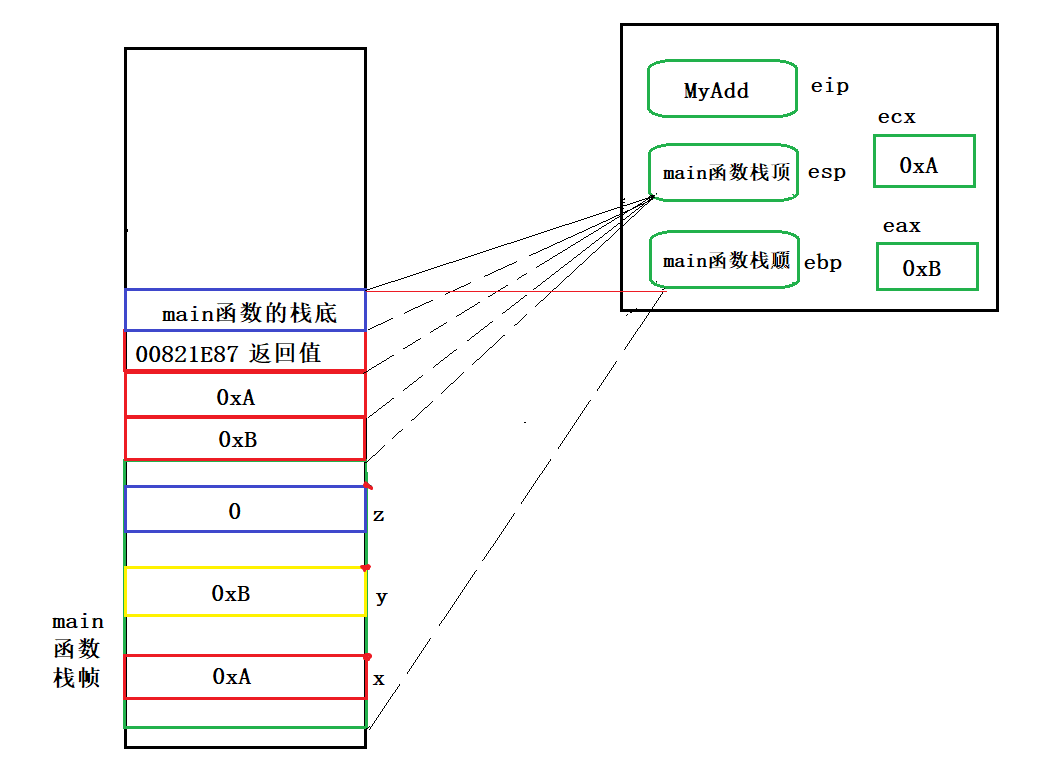
Then we may be confused, what to do at the bottom of the stack, can't we find it back? Actually not. Last step we did not save the bottom of the stack!!!
Step 3
sub: subtraction command
00821743 sub esp,0CCh
//The size of 0CCh depends on the size of the function you define
This command means esp minus a certain value and places the result in esp
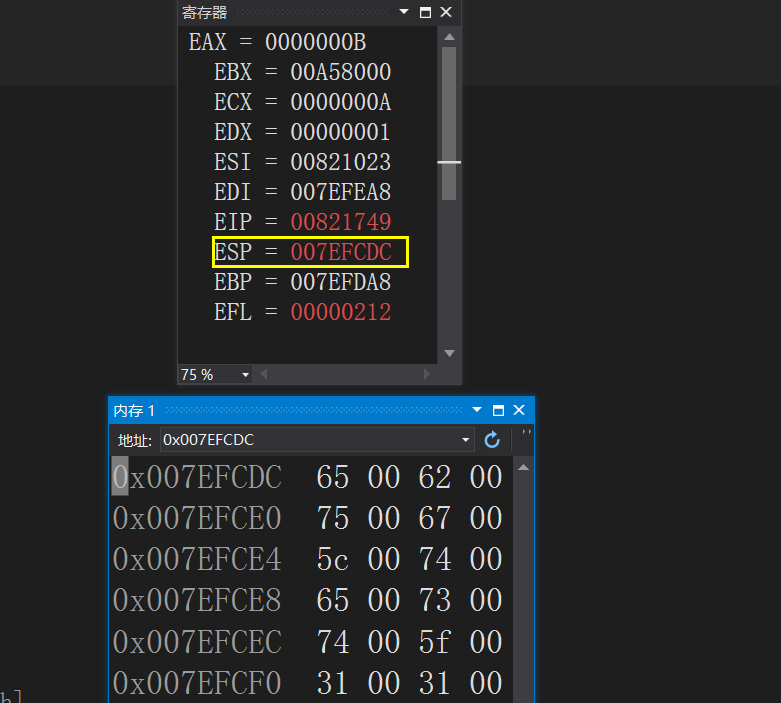
Here we have nearly formed the stack frame for MyAdd()
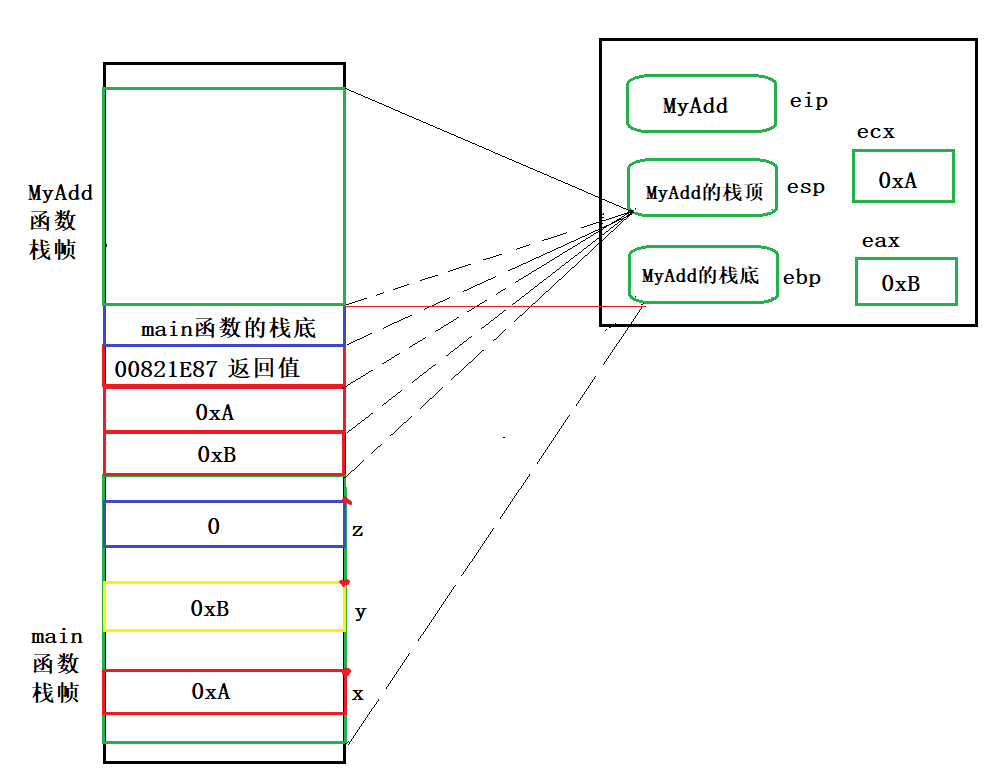
Step 4
int c = 0;
001E2EE5 mov dword ptr [ebp-8],0
//Create a space at ebp-8 to put the value of c in
This is the same as main's variable development
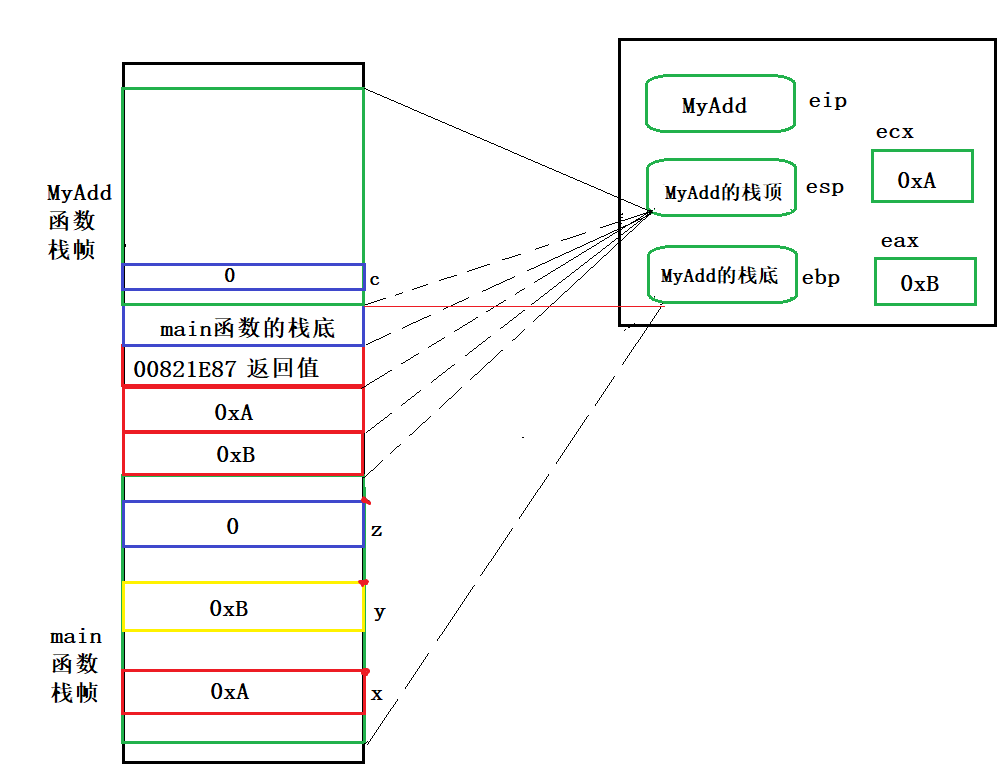
Step 5
c =a + b; 001E2EEC mov eax,dword ptr [ebp+8] 001E2EEF add eax,dword ptr [ebp+0Ch] 001E2EF2 mov dword ptr [ebp-8],eax
One-by-one analysis
001E2EEC mov eax,dword ptr [ebp+8]
Place ebp+8 in eax
So what is ebp+8? The answer is a copy of our x-value
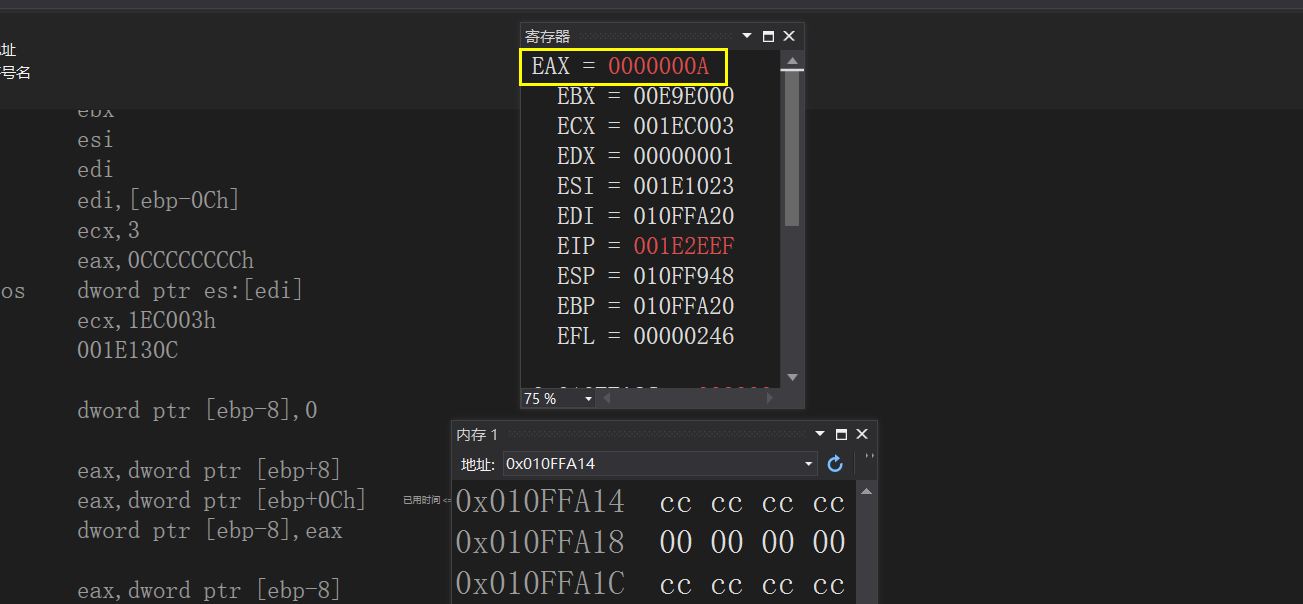
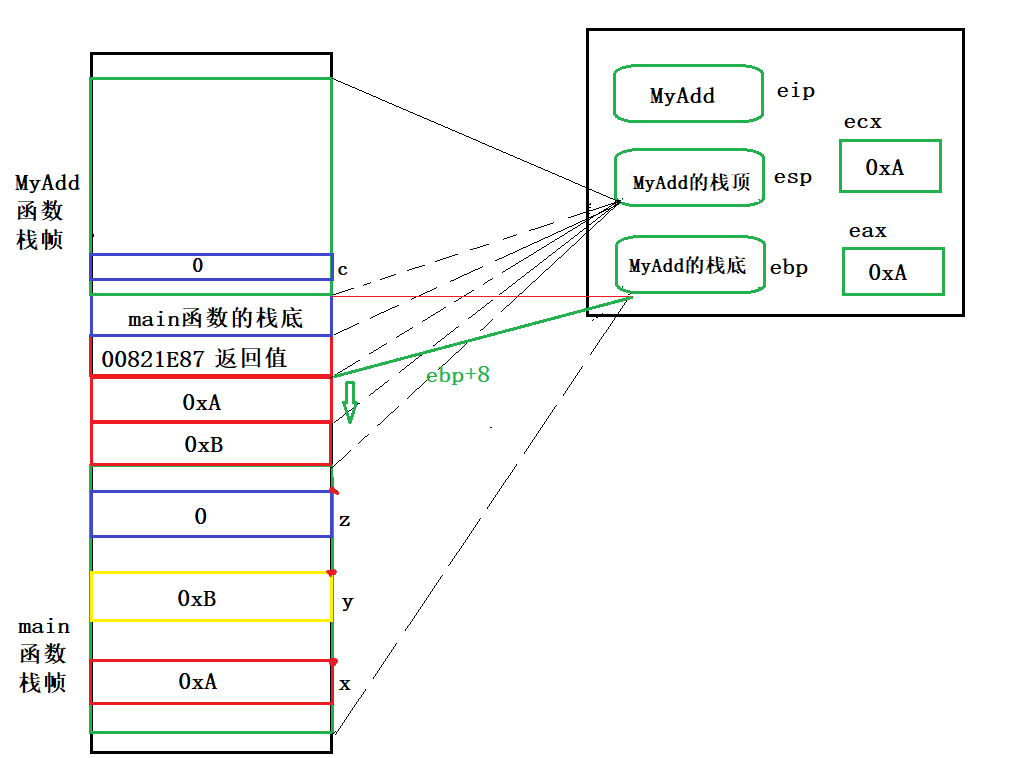
Same as
001E2EEF add eax,dword ptr [ebp+0Ch]
This command adds ebp+0Ch's content and eax to eax
ebp+0Ch is a copy of the y value
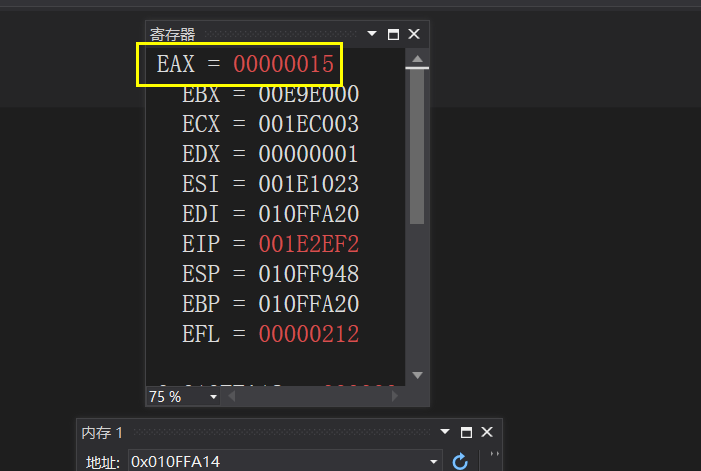
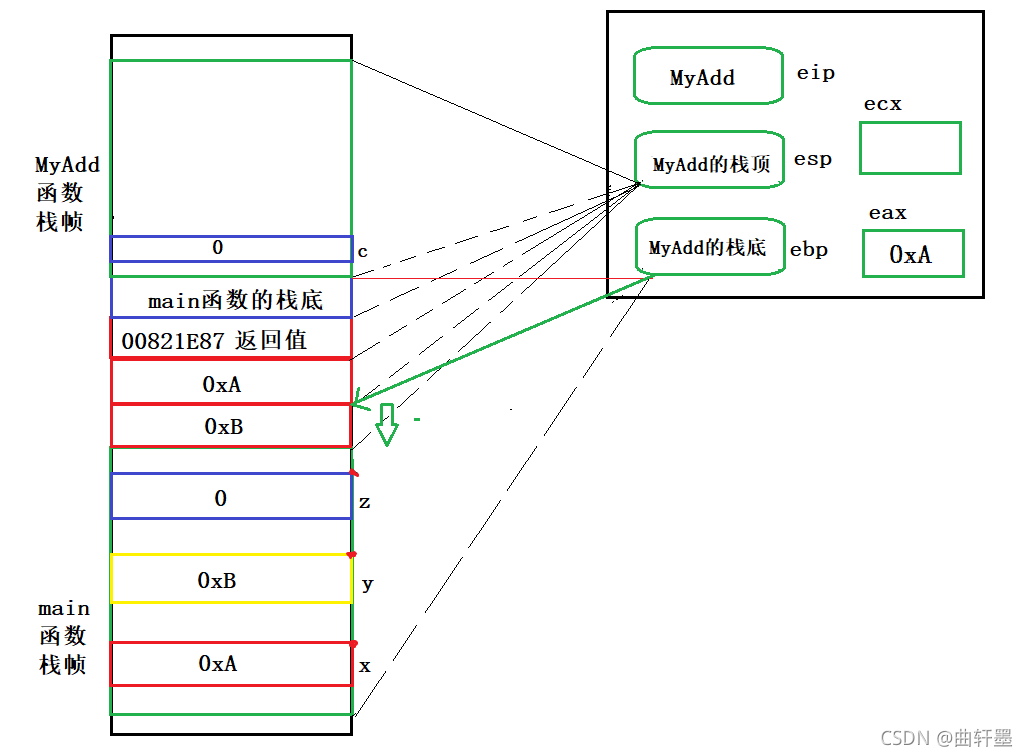
001E2EF2 mov dword ptr [ebp-8],eax
This command writes eax to ebp-8, or c

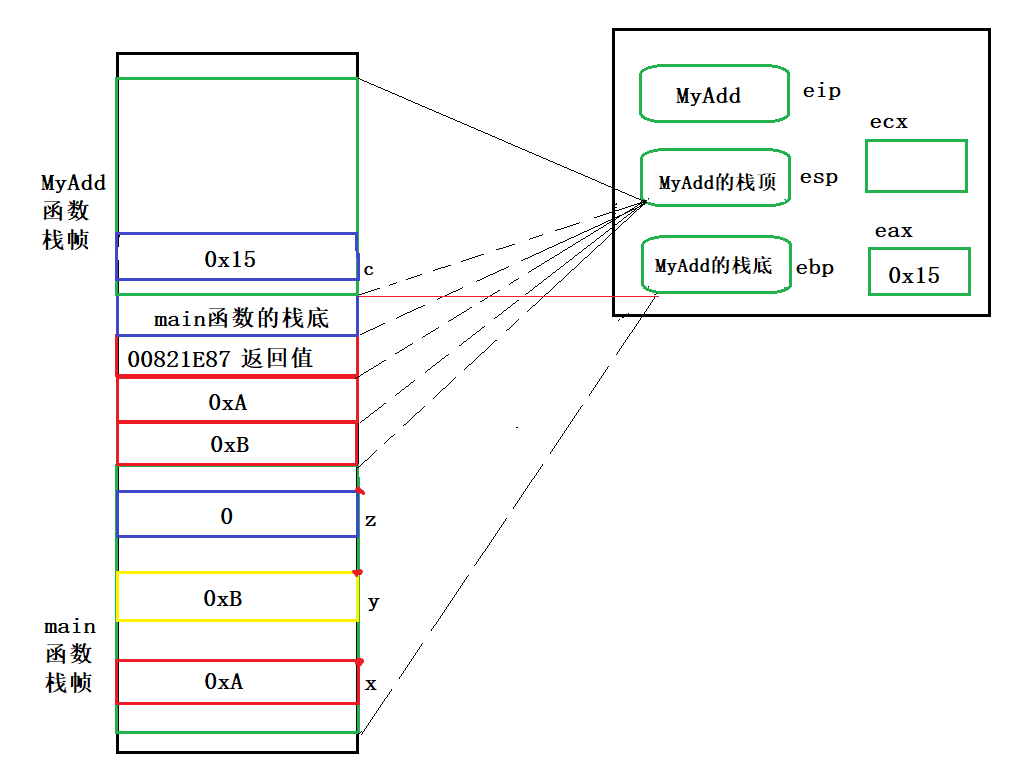
Ready to return
Step One
001E2EF5 mov eax,dword ptr [ebp-8]
Save Return Value
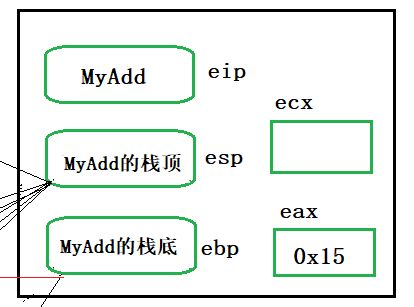
Step 2
001E2F08 mov esp,ebp
Overwrite ebp to esp
This step can also be called Release Stack Frame
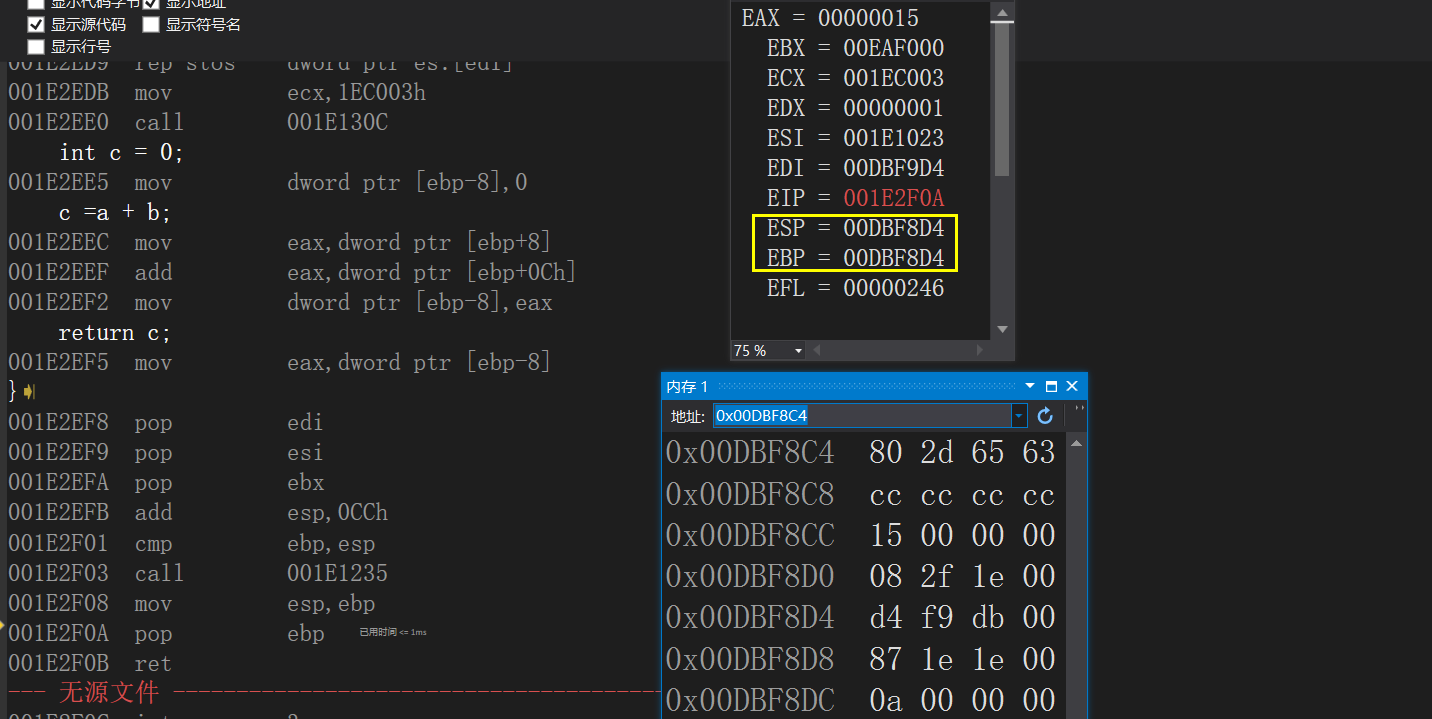
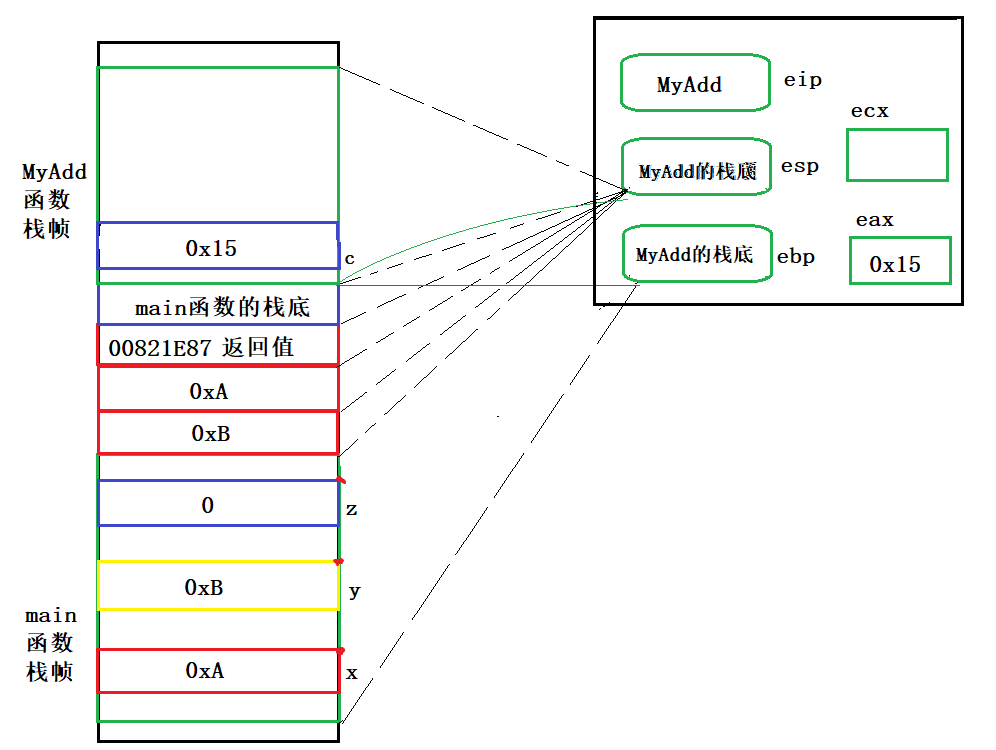
Step 3
pop: data pops up to the specified location and the esp stack top register changes
001E2F0A pop ebp
"Bullet Stack"
Place the base of main function in ebp, esp content changes
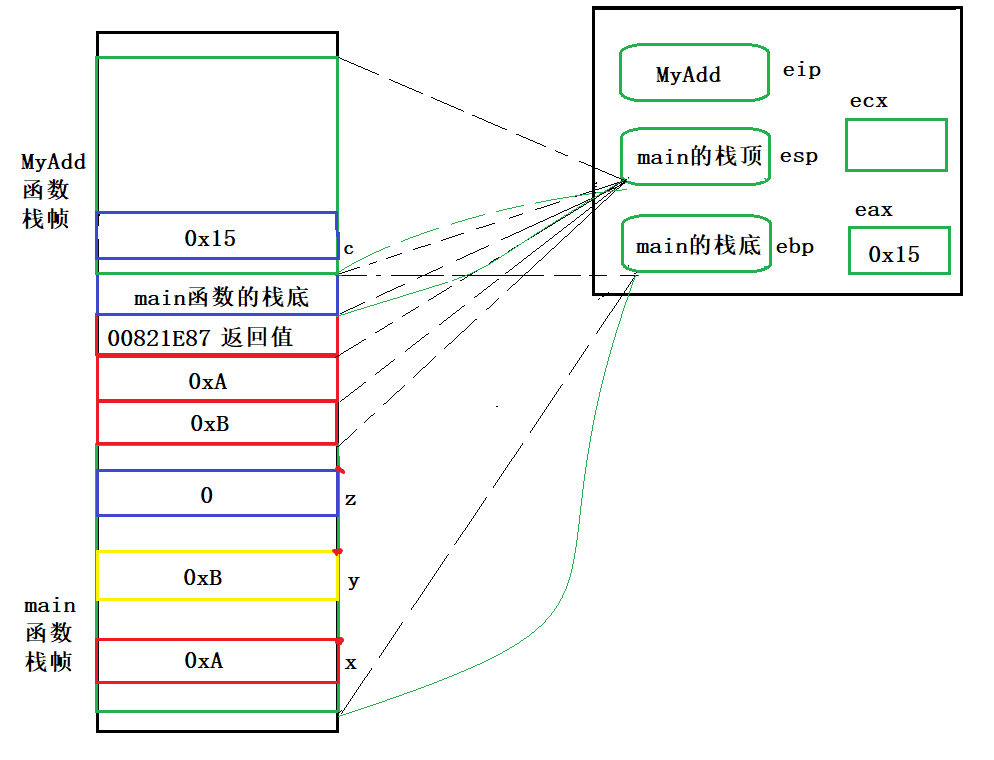
Step 4
ret: restore return address, press eip, similar to pop eip command
001E2F0B ret
Put the next address of the previous call in eip, esp content changes
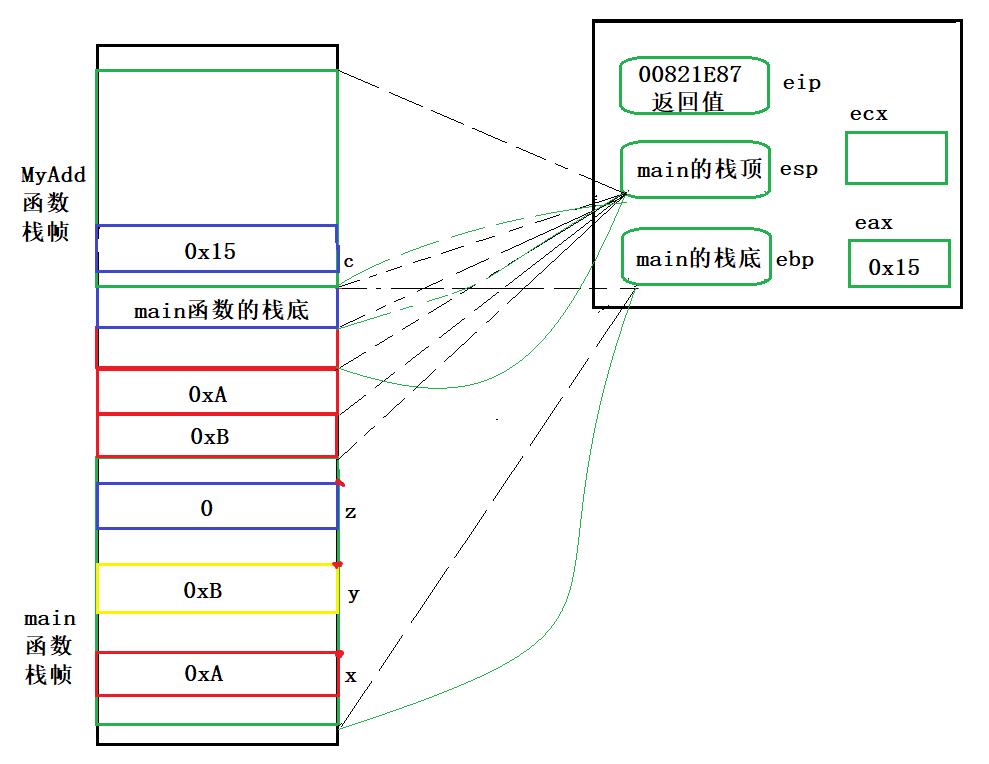
Step 5
A variable that releases a temporary copy
001E1E87 add esp,8
Means esp+8 in ESP
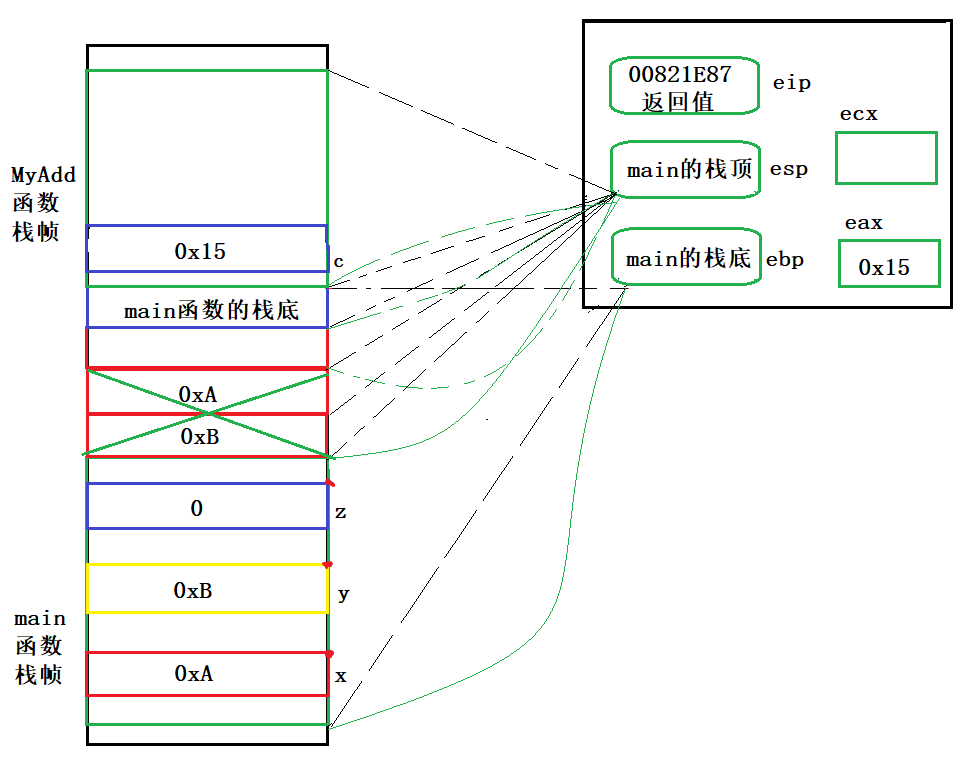
Now we're back before MyAdd executes
Step 6
001E1E8A mov dword ptr [ebp-20h],eax
Receive Return Value
Put the eax value in ebp-20 (z)
The essence of return
- Return to main stack frame
- Return to the corresponding code
summary
- The stack frame of a function is determined by the compiler
- The space of the variable push enters is continuous
- The size of 0CCh depends on the size of the function you define
Why is the stack frame of a function determined by the compiler?
There are many data types in our C language, which is the compiler's ability to know the size of all types of variables.
I'll see if I need to add some knowledge later.